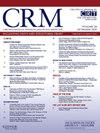Reintervention after aortic root replacement with allograft, xenograft, and stented bioprosthetic valves
IF 1.9
Q3 CARDIAC & CARDIOVASCULAR SYSTEMS
引用次数: 0
Abstract
Background
There has been a significant increase in the utilization of non-mechanical valves in the aortic position over time. However, details in reinterventions after aortic root replacement (ARR) with non-mechanical prosthesis were limited in the literature, despite the potential importance of reinterventions in the lifetime management of aortic valve disease.
Methods
This is a single-center retrospective study, identifying all patients who underwent ARR with allograft, xenografts, and stented bioprosthetic valved conduit from 2010 to 2020. Cumulative incidence was plotted for aortic valve reintervention.
Results
A total of 523 patients underwent ARR with non-mechanical valves: allograft (n = 80, 15.3 %), xenograft (n = 267, 51.1 %), and stented bioprosthetic valved conduit (n = 176, 33.7 %). The mean age was 65.9 years old. A history of infective endocarditis was seen in 124 (23.7 %). Overall, valve reintervention was observed in 21 (4.0 %). The median time to reintervention was 4.77 years. The reason for valve reintervention included structural valve deterioration (n = 12), followed by infective endocarditis (n = 6), complication during mitral valve replacement (n = 1), cardiac mass (n = 1), and pseudoaneurysm (n = 1). None of the reinterventions were transcatheter-based. Expected reintervention rates were 8.1 ± 2.0 % at 10 years. Cox hazard regression analysis revealed ejection fraction <30 and heart failure were independently associated with long-term mortality while type of valve was not.
Conclusions
Aortic valve reintervention was infrequent. Although subsequent valve in valve transcatheter intervention is often discussed when implanting non-mechanical valves, it was not a common strategy after ARR in our experience. The type of valve was not related to long-term mortality.
同种异体移植物、异种移植物和生物瓣膜支架置换术后的再干预
随着时间的推移,在主动脉位置使用非机械瓣膜的情况显著增加。然而,尽管再干预在主动脉瓣疾病的终身管理中具有潜在的重要性,但关于非机械假体主动脉根置换术(ARR)后再干预的细节在文献中是有限的。方法本研究为单中心回顾性研究,选取2010年至2020年所有接受同种异体移植、异种移植和支架式生物人工瓣膜导管ARR的患者。绘制主动脉瓣再介入的累积发生率。结果523例患者行非机械瓣膜ARR:异体移植(n = 80, 15.3%)、异种移植(n = 267, 51.1%)和生物人工瓣膜导管支架(n = 176, 33.7%)。平均年龄为65.9岁。124例(23.7%)有感染性心内膜炎病史。总体而言,21例(4.0%)患者进行了瓣膜再干预。再干预的中位时间为4.77年。瓣膜再介入的原因包括结构性瓣膜恶化(n = 12),其次是感染性心内膜炎(n = 6),二尖瓣置换术并发症(n = 1),心脏肿块(n = 1)和假性动脉瘤(n = 1)。所有再介入均不以经导管为基础。预期10年再干预率为8.1±2.0%。Cox风险回归分析显示射血分数<;30和心力衰竭与长期死亡率独立相关,而瓣膜类型与长期死亡率无关。结论主动脉瓣再介入治疗少见。虽然在植入非机械瓣膜时经常讨论后续的经导管介入治疗,但根据我们的经验,这并不是ARR后的常见策略。瓣膜类型与长期死亡率无关。
本文章由计算机程序翻译,如有差异,请以英文原文为准。
求助全文
约1分钟内获得全文
求助全文
来源期刊

Cardiovascular Revascularization Medicine
CARDIAC & CARDIOVASCULAR SYSTEMS-
CiteScore
3.30
自引率
5.90%
发文量
687
审稿时长
36 days
期刊介绍:
Cardiovascular Revascularization Medicine (CRM) is an international and multidisciplinary journal that publishes original laboratory and clinical investigations related to revascularization therapies in cardiovascular medicine. Cardiovascular Revascularization Medicine publishes articles related to preclinical work and molecular interventions, including angiogenesis, cell therapy, pharmacological interventions, restenosis management, and prevention, including experiments conducted in human subjects, in laboratory animals, and in vitro. Specific areas of interest include percutaneous angioplasty in coronary and peripheral arteries, intervention in structural heart disease, cardiovascular surgery, etc.
 求助内容:
求助内容: 应助结果提醒方式:
应助结果提醒方式:


